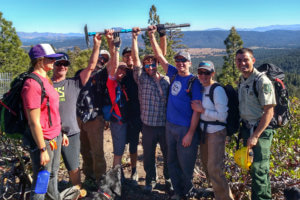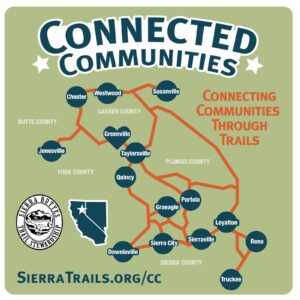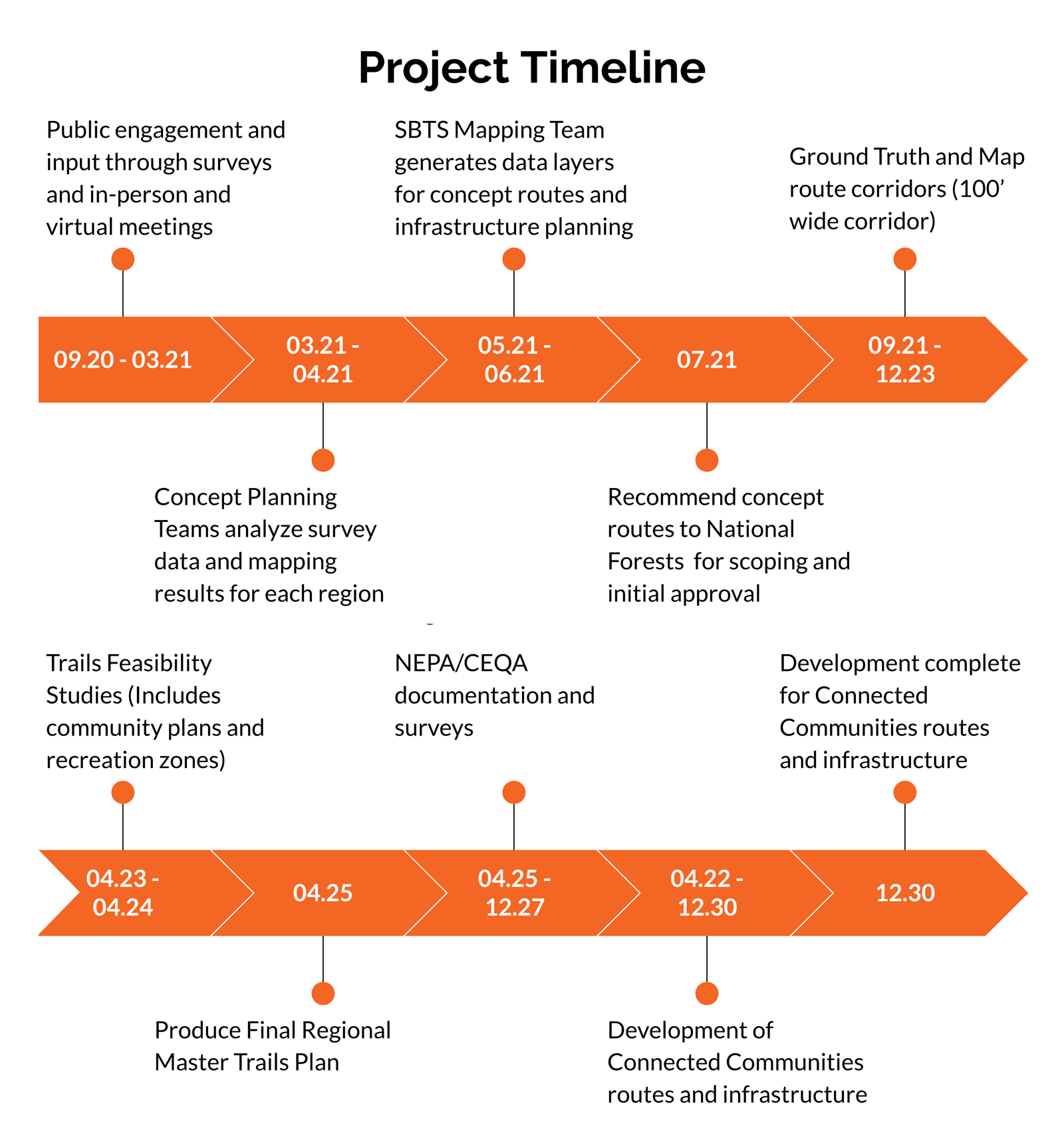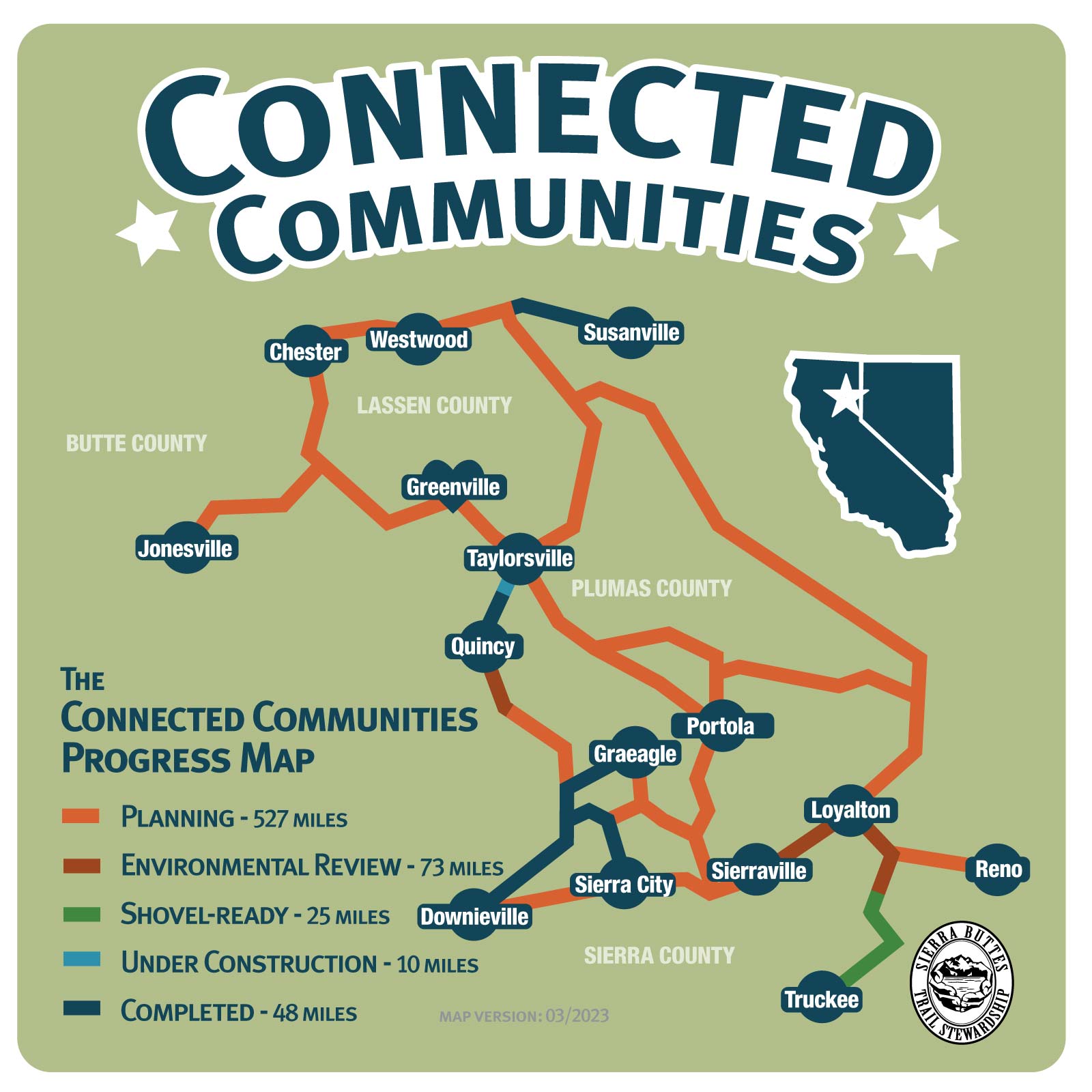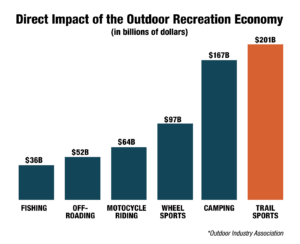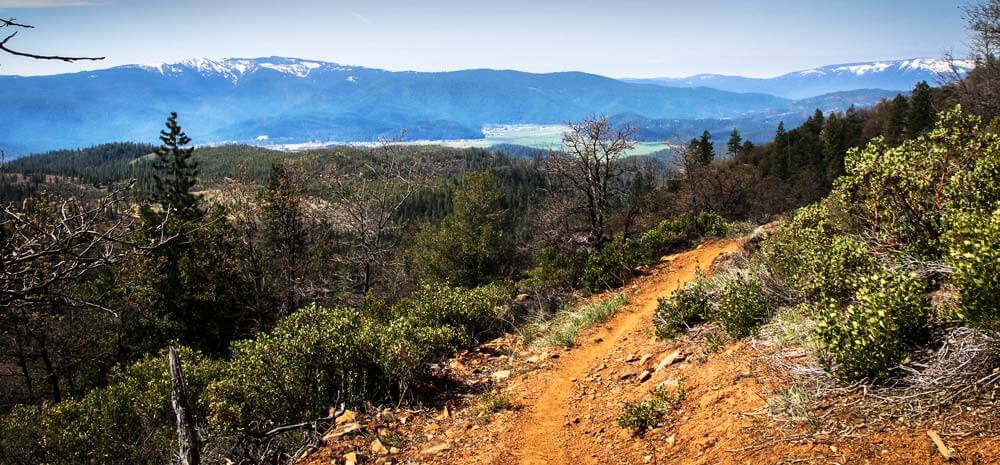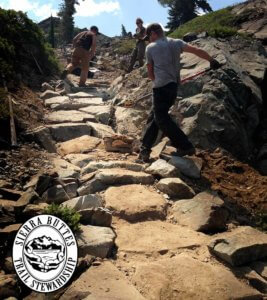The Connected Communities Project aims to stimulate the economies of rural communities by improving trail access and connectivity and encouraging diverse user types to explore and recreate on public lands by linking 15 mountain towns by trails.
The Connected Communities Project is a visionary effort led in partnership by federal land managers, SBTS, and community partners to connect 15 mountain towns for economic prosperity through outdoor recreation—an $887 billion industry. It will create a vision for a recreation-focused lifestyle through community investment, shared stewardship, economic opportunity, and important new local jobs, all benefiting economically disadvantaged communities in California’s Plumas, Sierra, Butte, Lassen, and Nevada Counties, as well as Washoe County, Nevada. Our work will include planning, environmental review, trail creation, and maintenance of trails. The project’s intent is to diversify recreation throughout the region and provide economic stability, as well as support fire recovery and prevention efforts. This project will create a learning landscape for outdoor and environmental education programs that include youth employment and volunteer participation. Our visionary goal is to establish a multi-use signature route highlighting these communities, which we are calling the Lost Sierra Route.
Project Overview
The Connected Communities Project includes four main components:
The Connected Communities Project includes four main components:
- Identify ideal trail corridors for a singletrack trail network to connect communities across the region and outline a signature route through the region dubbed the Lost Sierra Route
- Conceptualize capital improvement projects required to support the trail network such as trailhead infrastructure
- Highlight Recreation Zones as areas near communities that warrant additional planning and development
- Develop desired conditions for fuels reduction and restoration within future project planning areas
The Connected Communities Project area is located in northern California and western Nevada spanning:
- The ancestral homeland to many indigenous peoples, including Miwok, Maidu, Washoe, Nisenan, Konkow, Pit River and Paiute.
- 6 Counties: Plumas, Sierra, Lassen, Butte, Nevada and Washoe
- 15 Towns: Susanville, Westwood, Chester, Jonesville, Greenville, Taylorsville, Quincy, Graeagle, Portola, Loyalton, Sierraville, Sierra City and Downieville, Truckee and Reno
- 5 Federal Land Agencies: Lassen, Plumas, Sierra, Humboldt-Toiyabe National Forests and Bureau of Land Management
The Connected Communities Project can be broken into four phases:
- Planning — Trails Master Plan development (map)
- Environmental Review — compliance with NEPA and CEQA to seek project approval
- Construction — trail and capital improvement development projects
- Maintenance — annual and long term maintenance
Connected Communities Partner Acknowledgement
While this project would not be possible without the critical partnership from federal land managers and continued community-member support, financial backing is also critical to the project’s success. To date, the project has been primarily funded by Sierra Nevada Conservancy’s Resilient Sierra Nevada Communities and Vibrant Recreation and Tourism programs, but has also received financial support from Friesen Foundation, California Off-Highway Vehicle Division grants, Outdoor Industry partners, and matching funds brought by SBTS volunteers and donors.
The list of Connected Communities partners is extensive and varied, spanning from local elected officials to government agencies and municipalities including:
Sierra Nevada Conservancy
US Forest Service, Pacific Southwest Region 5
Tahoe National Forest
Lassen National Forest
Plumas National Forest
Plumas County Board of Supervisors
Sierra County Board of Supervisors
Lassen County Board of Supervisors
Butte County Board of Supervisors
City of Portola
City of Loyalton
City of Susanville
Congressional Representative Doug LaMalfa
California State Senator Brian Dahle
California State Assemblywoman Megan Dahle
California Department of Parks & recreation
Feather River Land Trust
Sierra County Land Trust
Lassen Land & Trails Trust
Truckee Donner Land Trust
Northern California Regional Land Trust
Friends of Plumas Wilderness
Feather River Tourism Association
Lake Almanor Area Chamber of Commerce
Lassen County Chamber of Commerce
Mountain Meadows Conservancy
Sierra Business Council
Plumas Corporation
Rotary- Portola, Quincy, Susanville, Indian Valley
Sierra County Visitors Bureau
Lost Sierra Chamber of Commerce
Center for Economic Development, Cal State Chico
State of Nevada, Off-Highway Vehicle Program
Pacific Crest Trail Association
Nevada County Woods Riders
Truckee Dirt Riders
Reno Area Dirt Riders
Chico Velo
Susanville Area Bicycle Association
Tahoe Area Mountain Bike Association
Truckee Trails Foundation
Santa Cruz Bicycles
Sierra Nevada Brewing Company
Patagonia
Dolan Auto Group
Clif Bar
Shimano
Fox Shox
Wilderness Trail Bikes
Paul Component Engineering
Radius Outfitters
REI Co-op
Klean Kanteen
Voler
Camp Chef
International Mountain Bicycling Association
Economic Benefits
Recreation on public lands currently represents the greatest economic and cultural opportunity for our rural communities. In the United States, Outdoor Recreation is an $887 billion industry with Trail Sports accounting for $201 billion. Trails on public lands are proven to create local employment, attract visitors and new businesses, and improve the health and economy of mountain communities.


